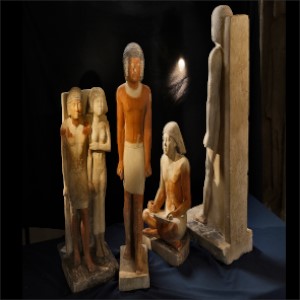Using AI to control energy for indoor agriculture
30 September 2024
Published online 4 July 2024
Researchers attribute degenerative changes in ancient bones to working for hours in bad position

While smart phones and excessive screen use are blamed for common problem of a sore back and neck, it turns out this ubiquitous condition is not all that modern. A new study in Scientific Reports found that ancient Egyptian scribes were plagued with similar degenerative skeletal changes from bad posture for prolonged periods.
The authors examined the remains of 69 adult males buried between 2700 and 2180 BC in the Abusir necropolis in Egypt's Giza Governorate, during the peak of the Old Kingdom’s glory. Thirty of the tombs belonged to scribes, a privileged occupation in ancient Egypt during a time when the literacy rate was 1%.
The researchers identified degenerative changes in spine and shoulder joints that were more common among scribes than others examined, and suggest they could have been caused by long periods in cross-legged or kneeling squatting positions, with the head bent forward, the spine flexed, and arms unsupported.
Petra Brukner Havelková , an anthropologist at the National Museum in Prague, explains that their study is the first to assess the effect of repeated tasks and prolonged positions on the scribes’ skeletons.
The study shows that the changes were most noticeable in the joints connecting the lower jaw to the skull, the right collarbone, the top of the right humerus, the right thumb, the bottom of the thigh, and throughout the spine.
Havelková explains that their findings could help identify scribes from unknown skeletons.
Link to original article:https://www.natureasia.com/ar/nmiddleeast/article/10.1038/nmiddleeast.2024.203
doi:10.1038/nmiddleeast.2024.209
Stay connected: